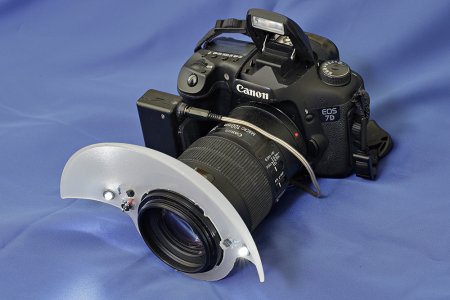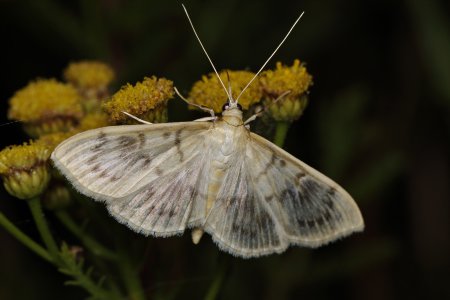
This was quite handy to take along on holiday trips and worked just fine for night-time moth photography.
The diffusor is plastic plate by Orthex (somewhat reduced with Dremel



The Multi-Function Shoe Adapter AD-E1 would be needed to use any conventional hotfoot accessory (compatible with Canon EOS dSLR) on the R7.It's far less convenient than a pop-up, but the closest you can come is the 90EX Speedlite. It's small. Takes AAA batteries, slow to recharge, weak, has some oddities, but small.
The 270EX is a little bigger but considerably more powerful, takes AAs. Still kind of slow, but still small.
Both would work with the R7.
No, it's not. The R7 has the 5-pin contact arrangement in the hotshoe as well as the MFS contacts. I've been using my 430EXII on both of my RF bodies with no issues.The Multi-Function Shoe Adapter AD-E1 would be needed to use any conventional hotfoot accessory (compatible with Canon EOS dSLR) on the R7.
I'm impressed with your creative ingenuity - thanks for posting a shot of the rig and some sample moths.View attachment 20125
This was quite handy to take along on holiday trips and worked just fine for night-time moth photography.
The diffusor is plastic plate by Orthex (somewhat reduced with Dremel) and the main component of the LED system is LM317L. In addition to that it just needs the LED:s and the resistors, which choose the output voltage for the LED. These depend on your LED:s. The power switch is in the battery pack.
No, it's not. The R7 has the 5-pin contact arrangement in the hotshoe as well as the MFS contacts. I've been using my 430EXII on both of my RF bodies with no issues.
EDIT: -> Here <- is something I wrote on RFShooters about the AD-E1. The person was asking a different question but this should describe the overall concept of the AD-E1 for any purposes.
| Product Name | EOS R5 | EOS R6 | EOS Kiss M2 / EOS M50 Mark II | EOS R3 | EOS R7 | EOS R10 | |
|---|---|---|---|---|---|---|---|
| Macro Ring Lite MR-14EX II | ○ | ○ | ○ | ○ | ○ | ○ | |
| Speedlite 430EX III-RT/430EX III | ○ | ○ | ○ | ○ | ○ | ○ | |
| Speedlite 600EX II-RT | ○ | ○ | ○ | ○*1 | ○*1 | ○*1 | |
| Macro Twin Lite MT-26EX-RT | ○ | ○ | ○ | ○ | ○ | ○ | |
| Speedlite EL-100 | ○ | ○ | ○ | ○ | ○ | ○ | |
| Speedlite EL-1 | ○ | ○ | ○ | ○*1 | ○*1 | ○*1 | |
| Speedlite EL-5 () | - | - | - | ○*2*3 | ○*2*4 | ○*2*4 |
We use essential cookies to make this site work, and optional cookies to enhance your experience.
